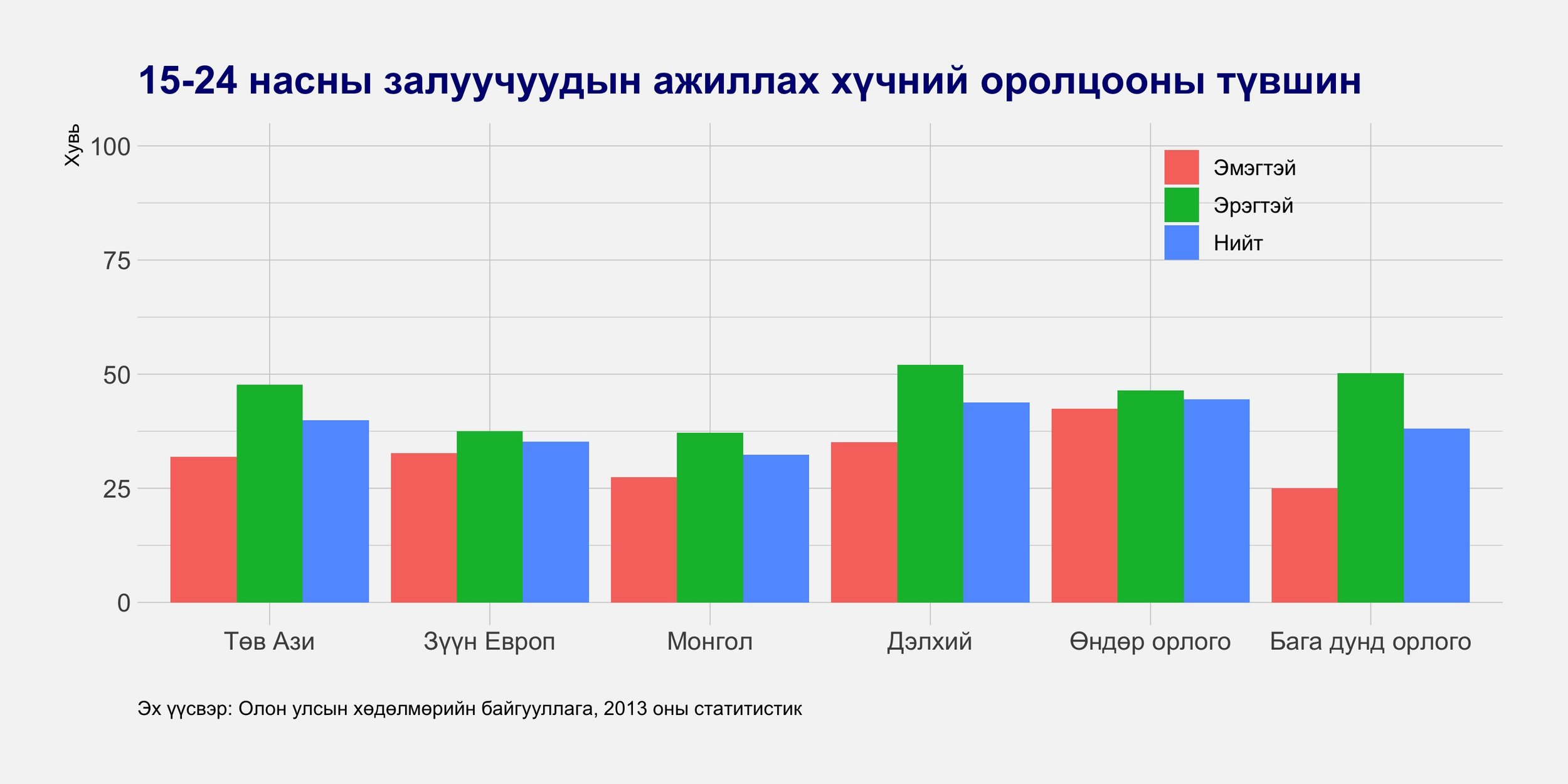Does temporary vocational training increase employment in young men?
Why is it important to measure the impact of policies and programs implemented by the government using scientific and non-controversial methods?
Most policies and programs implemented by the government are funded by taxpayers' money, so they must be cost-effective. Therefore, it is extremely important to prove the effectiveness of policies and programs through scientific methods.
Scientifically measuring the impact of policies and programs not only proves effectiveness but also provides important information for determining optimal implementation techniques and program design.
In Mongolia, there are many policies and programs implemented by the government, but there are very few studies evaluating the impact. The researchers of the NRCC company and the researchers of Canada and Argentina evaluated the impact of the temporary vocational training implemented by the Capital Employment Department using a random experiment method in 2013-2015.
The pilot study evaluates the impact of the largest and longest-running employment promotion program and is unique in that it enriches labor market research with evidence from emerging and transition economies. This is because there is very little research that measures the impact of policies to promote employment in developing countries, including countries with transition economies. Another innovative aspect of the study is the implementation of an information intervention trial to measure the impact of ad hoc vocational training. Specifically, an experimental method of measuring the impact on attendance of trainees by giving them a weekly letter containing information that the wages of people with skills are higher than those with no skills in the labor market showed interesting results.
Social and economic changes in Mongolia between 1990 and 2010 brought about major changes in the labor market. For example, a new concept of unemployment was created in the labor market after the transition from the socialist system to the market system, where the administrative policy of "Everyone has a job" has been followed. Also, the expansion of the labor-intensive mining sector and the contraction of the labor-intensive traditional agricultural sector have greatly increased rural-to-urban migration. These major changes have coincided with an aging population, which has increased pressures on the labor market. The population of Mongolia is relatively young (median age 26), and 55 percent of the working-age population is young.
Temporary vocational training
Temporary Vocational Training has been in place since 2003 to reduce unemployment and increase the labor force participation rate. The training program is demand-driven or involves the unemployed, at-risk-of-unemployment, and low-income groups in skills training that is in demand by employers.
According to the Ministry of Labor at the time, as of 2011, the training program had enrolled 8,000 people and spent 3.5 billion MNT (US$2.1 million). Training centers are selected annually through tenders, and the selected centers organize 20-45 days of training in more than 50 types of professions every year. The training costs are financed by the Employment Support Fund.
In 2013, 47 training centers were selected through tenders and organized 141 courses in 6 groups of professions such as hairdressers, cooks, construction and heavy machinery. Tuition fees ranged from 140,000 to 220,000 MNT (US$90-140), depending on the duration and specialty. The training consists of 30% classroom theory and 70% practical training at the factory.
Compared to vocational training in other developing countries, the training period in Mongolia is relatively short and the fees are low. For example, the training implemented in other countries consists of 2.5 months to 2 years of classroom training and 2 to 6 months of internship, and the payment is 330 - 1700 US dollars.
Evaluation design
In the fall of 2013, 1188 young people aged 15-29 who applied for vocational training conducted by the Capital Labor Department were randomly divided into a treatment group (774 young people) and a control group (414 young people) who did not participate in the training. In doing so, a baseline survey was conducted on all applicants and randomization was performed daily. Control and treatment groups were created by random sampling in occupations with fewer available positions than the number of applicants on that day.
The informational intervention was implemented by randomly assigning the 774 participants from Intervention 1 to receive or not receive an informational letter. The unit of intervention 1 or study randomization was the applied youth, while the unit of intervention 2 was the classroom. In other words, in the 2nd intervention, the participating classes and non-participating classes were selected, and letters with information were sent to the youth studying in the participating classes.
The result
The results of this pilot study show that temporary vocational training has an effect on youth self-employment and skill matching in the short and medium term[1]. Specifically, training increases self-employment by 8-9 percentage points compared to the control group, i.e. young people who did not receive training, while skill matching increases by 10-14 percentage points in the short term. The effect on skill alignment fades in the medium term. Training also increases employment and wages in the short term but is statistically insignificant. In other words, it is impossible to conclude that temporary vocational training has an effect on these two indicators. In terms of salary, there was a very high difference (monthly salary of 123,000-145,000 MNT more than the control group), but it was not statistically significant.
Intervention 2, the informational intervention, was found to increase attendance by an average of 3 days. However, there is no impact on labor market indicators such as employment and wages.
Several noteworthy findings emerged from the study. For example, the training participation rate (57%) was quite low compared to similar training implemented in other developing countries (training participation 77-99%). Among several variables that had a significant impact on non-attendance of training, the conditions of the quadruple contract added to the training program implemented in Ulaanbaatar at that time became a major factor. Previously, a tripartite contract was signed with the student, the Metropolitan Labor Department, and the district labor department, but the addition of a fourth party, the employer, reduced the likelihood of participants attending the training by 54 percent.
Another noteworthy result is that the positive effects of VET on skills matching and self-employment were more accessible to those with higher education, relatively higher incomes, and those over 21 years of age. In other words, the group that benefited the least from the program was the target group of the program: low-income, low-educated, and 15-21-year-olds. The study pointed out that the extreme disparity of the youth labor market in Ulaanbaatar cannot be solved with a very short training period. In addition, the study concluded that to make training more accessible to low-income and low-educated target groups, where professional skills are most needed, the design of the target group needs to be changed.
[1] The results of the follow-up study 6 months after the end of the training were considered as short-term, and the results of the follow-up study after 18 months were considered as medium-term results.
The results of this pilot study are published in the October 2021 issue of the World Bank Economic Review. The research will be discussed in detail at the NRCC research seminar on October 26, 2022. To attend the seminar, click here for information.



